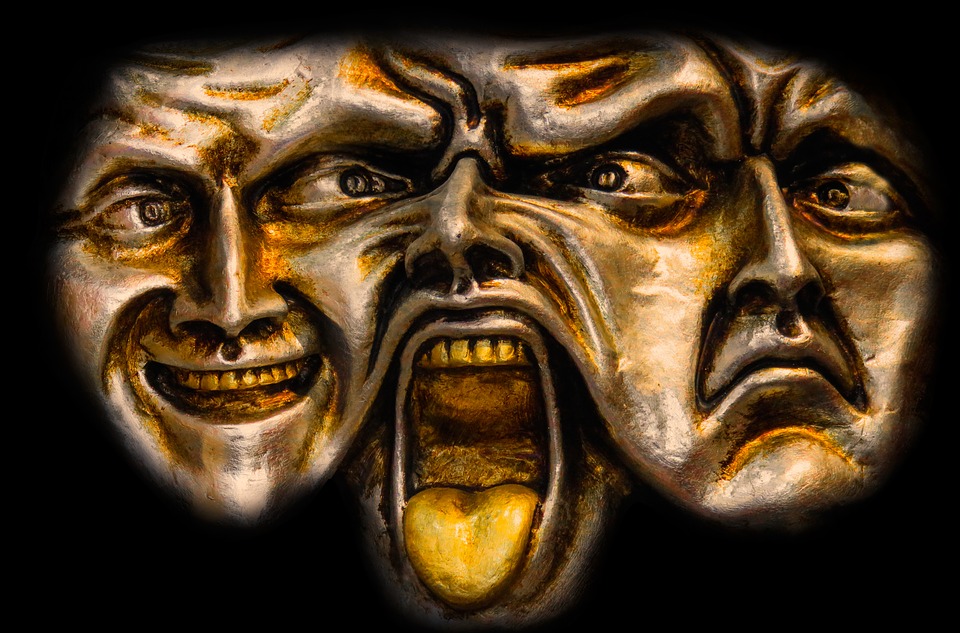Is the Rorschach Test Able to Find Certain Mental Disorders?
Introduction
The Rorschach test is a projective technique of ink spots, which was proposed by the Swiss psychiatrist Hermann Rorschach in 1921. The stimulus material of the Rorschach test consists of 10 standard tables with black-and-white and color symmetric amorphous (semi-structured) images. Initially, this test was designed to diagnose schizophrenia, but later it was used to assess personality traits, creativity, and emotional response. To date, the Rorschach test is used mainly in clinical and psychological research of the personality, it can determine some criteria or symptoms of schizophrenia, but can not serve as a single tool in diagnosing.
Rorschach Test as a Projective Method
Firstly, the Rorschach test can measure specific criteria, prerequisites, and symptoms of mental illness, but can not with an exact probability reflects its presence.
It is commonly known that projective methods help to examine and explore the inner psychological organization, needs, hidden motives, feelings, conflicts and complexes, information about which can not be obtained with the help of objective and subjective tests (Vermande, Marjolijn Margaretha). Rorschach test meets all the criteria of the projective methodology-ambiguity of the stimulus material, free instruction and no restrictions on the number of answers and can give valuable information about certain aspects of the personality. Initially, the Rorschach test was developed by its creator as a tool for diagnosing the schizophrenia and its symptoms. Rorschach noted that the perception of certain images and spots in people with schizophrenia differs from the perception of healthy people. Already after Rorschach’s death, the test was used for other purposes, for diagnosing various diseases and aspects of the personality, but nowadays psychologists and psychiatrists use it in clinical practice mainly to detect schizophrenic symptoms. According to the triad of Bleuler, the primary symptoms of schizophrenia are associative disorders, autism, and emotional dullness (Gross, Richard D, and Rob McIlveen). Given this, the Rorschach test allows opening underlying fear in a patient with schizophrenia, in whom tension and autism overlap affectivity (Thiesen, J. Warren). In some patients, it can identify delusions. Also, the Rorschach test can reveal some symptoms of schizophrenia, such as stupor refusal of the task, fluctuations between good and bad forms definitions, weak suggestibility, self-centeredness, contamination (Thiesen, J. Warren). In this context, it is worth noting that the Rorschach test cannot accurately diagnose schizophrenia, but only demonstrate some of the inclinations and prerequisites of the subject to this disease.
Secondly, the Rorschach test, being a projective technique, cannot be used as the only tool in psychodiagnostic and requires competence from a diagnostician. Diagnosis of mental illness in clinical practice is a very complicated, multi-step process that requires competence from the psychiatrist. Interpretation of the Rorschach test requires appropriate knowledge and skills on the part of the specialist who conducts the diagnostics. Given these factors, a psychiatrist can not testify to the presence or withdrawal of any mental illness, taking into account the results of only one technique. The primary method, in this case, is the conversation and interview, and projective techniques, including the Rorschach test, can serve as an additional tool in the diagnosis of personality (Vermande, Marjolijn Margaretha). Therefore, the use of the Rorschach test requires appropriate knowledge and skills from the diagnostician and cannot be used in clinical practice as the only tool for detecting a mental illness.
Thirdly, modern psychology often raises questions about the validity and reliability of the Rorschach test and the limitedness of its results. To date, the Rorschach test is often questioned as a valid and reliable tool for diagnosing various aspects of personality and mental illness (Wood, James M et al.). It is well known that validity and reliability are those concepts that characterize the test as a measuring tool. Many studies have shown a low internal consistency of the test, low retest reliability and low prognostic and current validity (Wood, James M et al.). In this case, there is a question about the relevance of its use in clinical practice. As mentioned earlier, the interpretation of the results of the Rorschach test requires the competence of the diagnostician in this matter. If the diagnostician is incompetent or the interpretation is incorrect, the Rorschach test may show irrelevant results and, as a result, complicate the formulation of the correct diagnosis. Thus, nowadays, many psychologists and psychiatrists raise the question of the validity and reliability of the Rorschach test, as well as its limitations in interpretation.
Conclusion
In conclusion, the Rorschach test can serve as a methodological tool for identifying certain symptoms of schizophrenia. Nevertheless, the diagnostician can not take into account the results of only this test, since it is an additional method in the diagnosis of mental illness. The use of the Rorschach test requires specialized knowledge and skills of the diagnostician who uses it, which complicates the use of it. To date, the use of the Rorschach test causes a lot of controversy in psychology science because of its contradictory results and low retest reliability. Therefore, the Rorschach test can be used to diagnose certain symptoms of schizophrenia in clinical practice but must be correctly interpreted by the diagnostician.
Works Cited
Gross, Richard D, and Rob McIlveen. Psychopathology. London, Hodder & Stoughton Educational, 2000.
Thiesen, J. Warren. “A Pattern Analysis Of Structural Characteristics Of The Rorschach Test In Schizophrenia..” Journal of Consulting Psychology, vol 16, no. 5, 1952, pp. 365-370. American Psychological Association (APA), doi:10.1037/h0063653.
Vermande, Marjolijn Margaretha. Psychodiagnostics. Nijmegen, Nijmegen Institute For Cognition And Information, 1995.
Wood, James et al. What’s Wrong With The Rorschach?. San Francisco, CA:, Jossey-Bass, 2003.
Get More Help Than Just Research Paper Samples
We also have an extraordinary psychology research paper sample about Pokémon Go to share with you! Actually, we have many interesting samples on our blog. Don’t hesitate to check them out!
